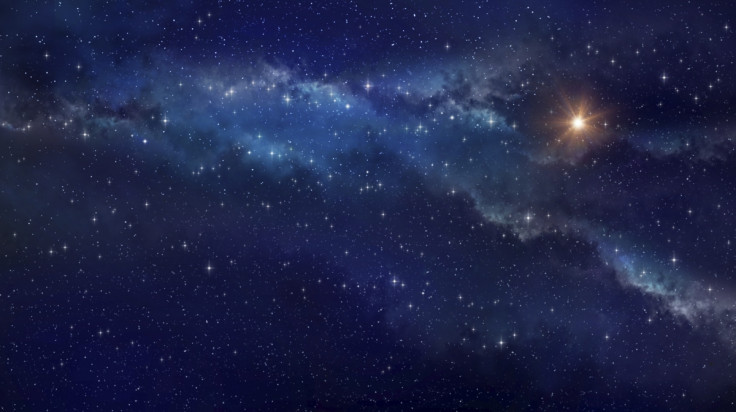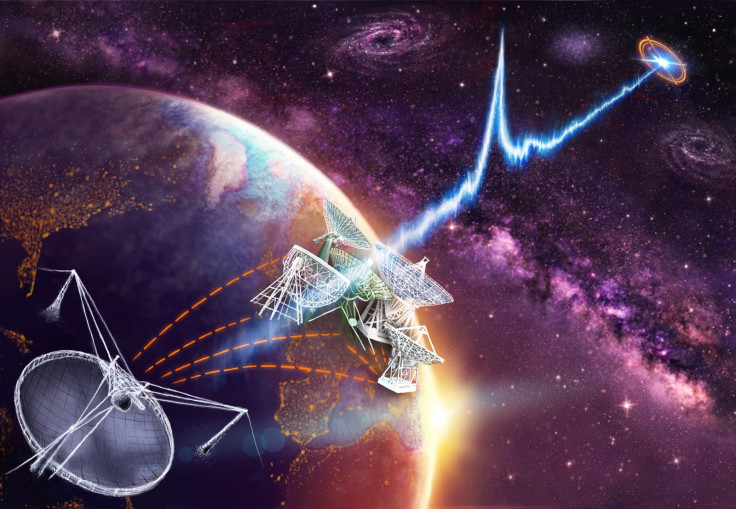Source of mystery space signals tracked to dwarf galaxy 3 billion light years away
Scientists pinpoint location of repeating fast radio burst FRB 121102 – but they still don't know what's producing it.
Mysterious radio signals from deep space are a step closer to being identified after scientists pinpointed the region where they are coming from – a dwarf galaxy more than three billion light years away.
The first fast radio burst (FRB) was first discovered 16 years ago. Since then, more than a dozen have been detected in telescope data. They are extremely short and bright eruptions of radio waves that last for just a few milliseconds and, in most cases, are one-off events with just a single burst recorded from a single location. This means that astronomers have been unable to find out where they came from and what was causing them.
Previously, scientists announced they had discovered the source location of FRB 150418 – showing that it came from an elliptical galaxy six billion light years away. However, the research was quickly questioned, and follow-up observations indicating the original FRB was, in fact, just a supermassive black hole.
In March 2016, scientists announced that the first ever repeating FRBs had been discovered. Writing in the journal Nature, researchers found 10 bursts coming from the same direction as FRB 121102, using the Arecibo radio telescope in Puerto Rico. At the end of last year, the discovery of six more bursts coming from the same location was announced.

An international team of researchers has now used a network of radio telescopes to work out where in the universe they are coming from. Their findings are published in the journal Nature and the Astrophysical Journal Letters.
The team used previous observations of FRB 121102 to find a general direction. "Near this position, astronomers found both steady radio and optical sources, which pointed the way to the galaxy hosting the FRB," said Shami Chatterjee, the first author of the study.
The team then zoomed in on the radio source using the Arecibo Radio Telescope and the European VLBI Network and, "with a bit of luck" they were able to detect more bursts from FRB 121102 – allowing them to pinpoint the galaxy they were coming from: a dwarf galaxy more than three billion light years away.
Understanding the type of galaxy the FRBs came from could provide clues as to what is causing the bursts. Dwarf galaxies tend to contain gas that is pristine, when compared with the Milky Way, meaning it has the potential to form far more massive stars than our own galaxy can. This means the source could be the collapsed remnant of a giant star.
Extremely bright exploding stars and long gamma ray bursts are also characteristic of this type of galaxy - and both of these are associated with massive, highly magnetised and rapidly rotating neutron stars called magnetas. These are dense, compact objects that emit periodic radio pulses as they spin, so could be the source of the bursts.

Alternatively, it could be that the FRBs are being generated by compact central region called an active galactic nucleus – where the bright centre can be more luminous than the light in the rest of the galaxy put together.
"Our observations are inconsistent with the fast radio burst having a galactic origin or its source being located within a prominent star-forming galaxy. Instead, the source appears to be co-located with a low-luminosity active galactic nucleus or a previously unknown type of extra-galactic source," the team wrote.
The next step would be to work out exactly what is causing the FRBs – and to establish whether others are being produced by similar sources, or if different cosmic phenomenon can produce them.
Regardless, researchers their findings provide the first evidence of the location of an FRB. "We now know that this particular burst comes from a dwarf galaxy more than three billion light years from Earth," Chatterjee said. "That simple fact is a huge advance in our understanding of these events. Finding the host galaxy of this FRB, and its distance, is a big step forward, but we still have much more to do before we fully understand what these things are."
© Copyright IBTimes 2025. All rights reserved.






















